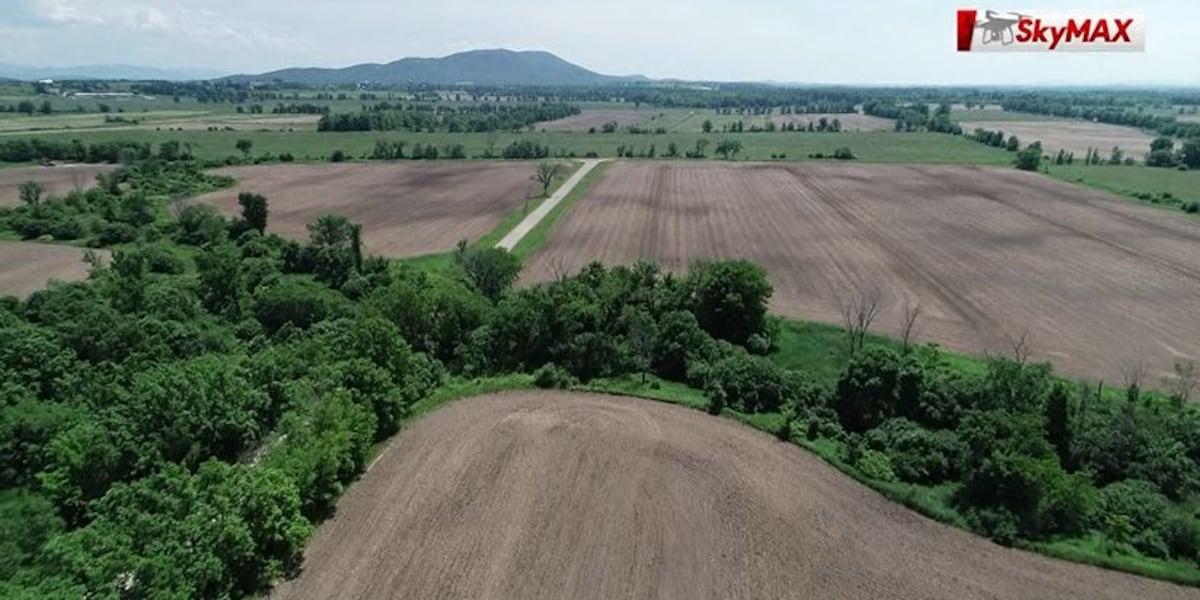PANTON, Vt. (WCAX) – Tensions are heating up over an Addison County solar project that would eclipse anything the state has ever seen.
Sam Marszalkowski’s memories of her farm in Panton run as deep as the crops that grow there. “When this is your whole backyard, you feel like you have the world at your fingertips from a very young age,” she said.
Her family has farmed it since the 80s and her brother carries on the legacy today. That’s why Marszalkowsk was upset when a cousin chose to sell the land to solar developers. “The way that we see this current project is that the nature in which it came about, its current proposed acreage, location, etc., is a matter that’s really contentious,” she said.
The developers, Pennsylvania-based SunEast Development and Connecticut’s Freepoint Energy Solutions were also behind recent projects in Shaftsbury and Fair Haven.
“It’s not, you know, a loamy or silty type soil. It’s very clay-like but that’s fine for putting piles in and sticking solar panels on it,” said SunEast’s Reed Wills.
But Marszalkowski says the corn, wheat, and soy growing in that clay — and the people existing alongside it — are resilient. “Panton residents are similar to the clay, where you can’t get rid of us that easily,” she said.
The developers hope to locate the panels on a stretch of land between Slang and West Roads. if they succeed, they’ll be making history with the Green Mountain State’s biggest solar array, so big it takes a bird’s eye view to comprehend. The 300 acres are equivalent to 230 football fields on and owned by the Marszalkowski and Vorsteveld families. At 50 megawatts, the array display — dubbed Viridis Solar — would be more than double the state’s current largest solar array of 20 megawatts in Ludlow and Cavendish. Viridis would generate enough energy to power more than 9,300 homes annually.
The developers say they need to go big to reach VELCO’s substation in Vergennes and to get enough bang for their buck. “All of the effort for all the work for all of the time is going to be greater economies to pay for the investment. And more importantly, is going to give a bigger benefit greenhouse gas mitigation for the state,” said Freepoint’s Peter Ford.
But all those panels have Panton residents — and some environmental groups — pushing back. They worry Viridis will harm the adjacent Dead Creek Wildlife Area. “We don’t want to disrupt ecosystems just to play into renewable energy goals,” Marszalkowski said.
With most of the projects falling outside of the town’s designated zone for renewable energy projects, town officials say they feel ignored. “At this point, I don’t see how we could get behind something that does not support our town plan or that is not compliant with our town plan,” said Mary Rudd, who sits on the Panton Development Review Board.
Perhaps their biggest concern is who is receiving the benefits of the project’s Renewal Energy Credits, a market-based attribute that governments or businesses use to measure a project’s environmental benefits.
“It’s basically using Vermont as a plantation, an energy plantation for Connecticut energy users,” said James Ehlers, an environmental activist.
The developers recently submitted proposals to sell power from their Panton, Shaftsbury, and Fair Haven projects to Connecticut utilities, which would receive the credits. SunEast’s Reed Willis says Vermont utilities were not interested in the project or the credits. “Tried some outreach but not had much luck with Vermont utilities showing interest to engage just because of all the low-cost hydropower that’s available,” he said.
Green Mountain Power officials declined to comment on the project, but they say on their their website that nearly 71 percent of their energy comes from hydro while 4 percent comes from new renewables including solar. Their stated philosophy — find the balance between localized renewable energy and affordable prices for customers.
The developers wouldn’t share their price offer for Viridis energy. but TJ Poor with the Department of Public Service says that developers, in general, can make more money by selling out of state. “They can always lower the price to have a favorable impact to their host town or host utility but just from a market dynamic perspective, they wouldn’t really have a reason to do that,” he said.
There’s no regulation forcing developers to sell to Vermont utilities. That means it’s Connecticut’s right to benefit from energy generated in Vermont. “Why would we then have to foot the bill and become a solar factory farm to benefit areas that don’t want it in their backyard as well?” said Marszalkowski said.
Peter Sterling with Renewable Energy Vermont, an industry trade group, points out that Vermont benefits from energy generated out of state, too, like hydro from Canada and nuclear from New Hampshire. “It’s not fair or reasonable to expect everyone else to host renewable energy projects for us so we don’t have to look at,” he said.
Vermonters will have more of these conversations in the coming years. Under the recently updated Renewable Energy Standard, Green Mountain Power and other state utilities must source 20 percent of their energy from new, smaller in-state renewable sources and an extra 20 percent from new, renewables of any size anywhere in New England by 2035. That means more development across the region.
“As time goes on and the requirements increase, then in New England, they’ll need to be more new renewable generation,” Poor said.
Viridis’ developers say the new law makes Vermont land even more attractive. “We take that as a real affirmation that Vermont, in general, is the right place for us to be and this is the right place for us to invest in,” Wills said.
Energy experts are weighing where investing in projects like Panton would leave Vermont ratepayers. Vermont Governor Phil Scott fears it will jack up utility rates by hundreds of millions of dollars. He vetoed the Renewable Energy Standard but lawmakers managed to override that.
Upgrades to the grid will be expensive, too, according to some opponents. “No matter how much greenwashing anyone does, this is not benefiting Vermont’s environment. It’s not benefiting Vermont ratepayers. If anything, it’s going to cost Vermonters in the longer term,” Ehlers said.
But Sterling says renewable development is worth the cost to reduce Vermont’s carbon footprint. “The only way to really do that is to bring on more renewables, and we have to host some of them here in Vermont,” he said.
Whether Viridis will be one of those projects remains to be seen. Developers say they won’t cause any environmental damage and are trying to find common ground within Panton’s preferred energy zone. Their project depends on a compromise. Poor says conflict between developers and a town plan has never gone before the Public Utility Commission.
The developers say they need more understanding and less animosity from locals. “If their goal is just to stop us and look for Achilles heels and gotchas and these other things, then we are going to exercise our rights to develop this project,” Ford said.
Marszalkowski says they just want more transparency and an equal seat at the table. “Being able to have a voice within that process versus being told one thing and then being concerned about how that might play out with the bigger fish in the pond,” she said.
The developers say Viridis could bring millions of dollars in tax benefits to Panton over time. They’re aiming to submit a proposal with the Vermont PUV within the year. As for Connecticut, they say they hope to hear back this summer.
Copyright 2024 WCAX. All rights reserved.
This post was originally published on 3rd party site mentioned in the title of this site





